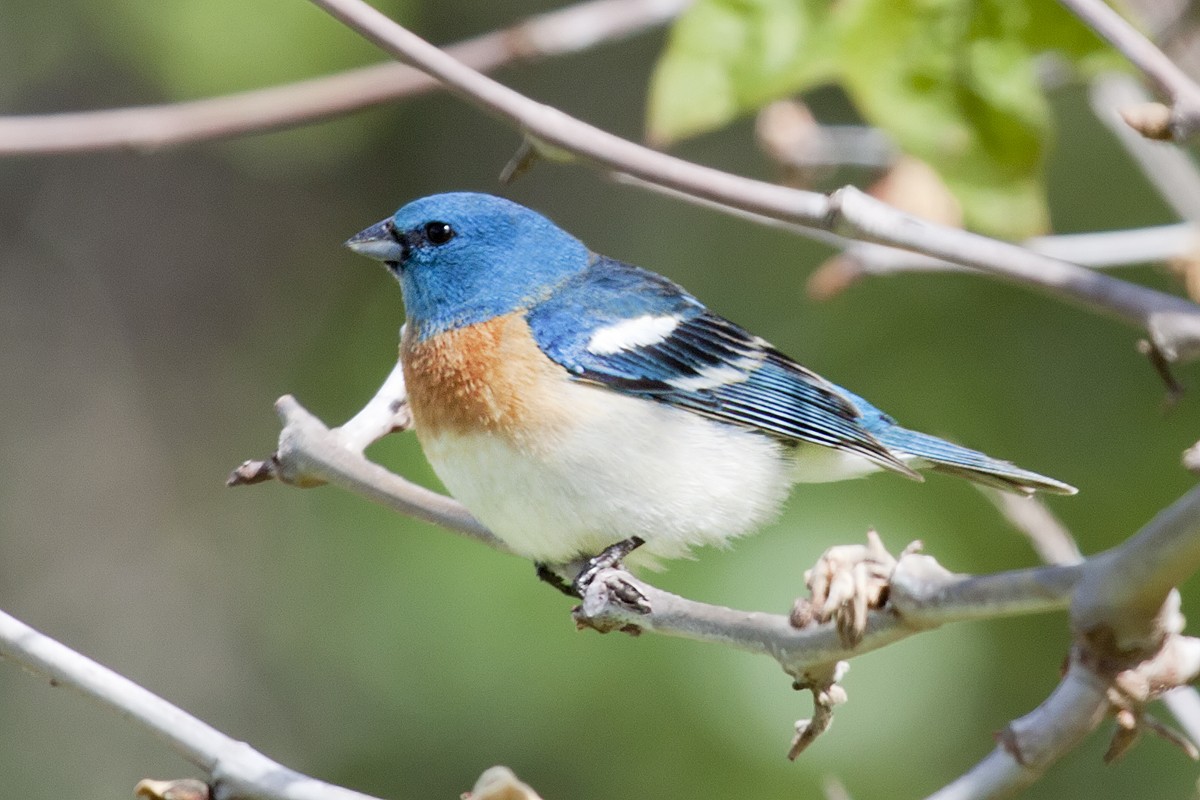Lazuli Bunting
A species of North american buntings Scientific name : Passerina amoena Genus : North american buntings
Lazuli Bunting, A species of North american buntings
Botanical name: Passerina amoena
Genus: North american buntings
Content
Description People often ask General Info
 Photo By Bill Bouton , used under CC-BY-SA-2.0 /Cropped and compressed from original
Photo By Bill Bouton , used under CC-BY-SA-2.0 /Cropped and compressed from original Description
The Lazulifink (Passerina amoena) is a North American songbird from the family of the Cardinals. The name is reminiscent of the blue-luster gem lapis lazuli.
Size
13-15 cm (5.25-5.75 in)
Life Expectancy
8–11 years
Nest Placement
Shrub
Clutch Size
3 - 4 eggs
Incubation Period
1 - 2 broods
Number of Broods
11 - 14 days
Nestling Period
9 - 11 days
Feeding Habits
Lazuli Bunting forage insects like caterpillars and spiders, and plant materials including berries and seeds from various grasses and shrubs. Preferring understory vegetation and bird feeders with white proso millet, their diet mainly comprises seeds and insects.
Habitat
Lazuli Bunting thrives in diverse habitats, from brushy hillsides and woodland valleys to agricultural field edges. Found across altitudes, they range from sea level to over 9,500 feet, favoring environments near streams and in recently burned areas, rather than in selectively logged or clear-cut regions. In winter, their habitat shifts to thorn forests and second-growth pine-oak woods in western Mexico, and they are common in agricultural landscapes with abundant hedgerows.
Nest Behavior
The female lazuli Bunting solely constructs the nest over 5–7 days. Egg-laying follows the nest construction, and both parents are involved in caring for the eggs and subsequent young.
Nest Characteristics
Lazuli Bunting's nests are typically located within shrubs like willow or wild rose, about 3 feet off the ground. They're constructed from grasses, bark, and leaves, bound with spiderweb or silk. The cup-shaped nests measure about 3.5 inches in diameter with a 2-inch inner cup.
Dite type
Insectivorous
People often ask
General Info
Feeding Habits
Bird food type
Bird Feeder Type

Platform

Small Hopper
Behavior
Lazuli Bunting exhibit characteristic behaviors associated with their daily life and environmental interaction. These birds are typically active in the understory, engaging in ground foraging, perching on shrubs, and making agile short flights. The males display territoriality, arriving at breeding sites early to claim space and attract mates through vibrant displays and incessant singing. Pair bonding is central, with mostly monogamous relationships, although some may engage in extra-pair mating. The defense of territory is taken seriously, as males will aggressively challenge and pursue intruders with dynamic flight and vocal threats. Before migration, lazuli Bunting congregate into small groups, initiating a molt that is completed at stopovers en route to wintering grounds.
Species Status
Not globally threatened.
Scientific Classification
Phylum
Chordates Class
Birds Order
Perching birds Family
Cardinals Genus
North american buntings Species
Lazuli Bunting